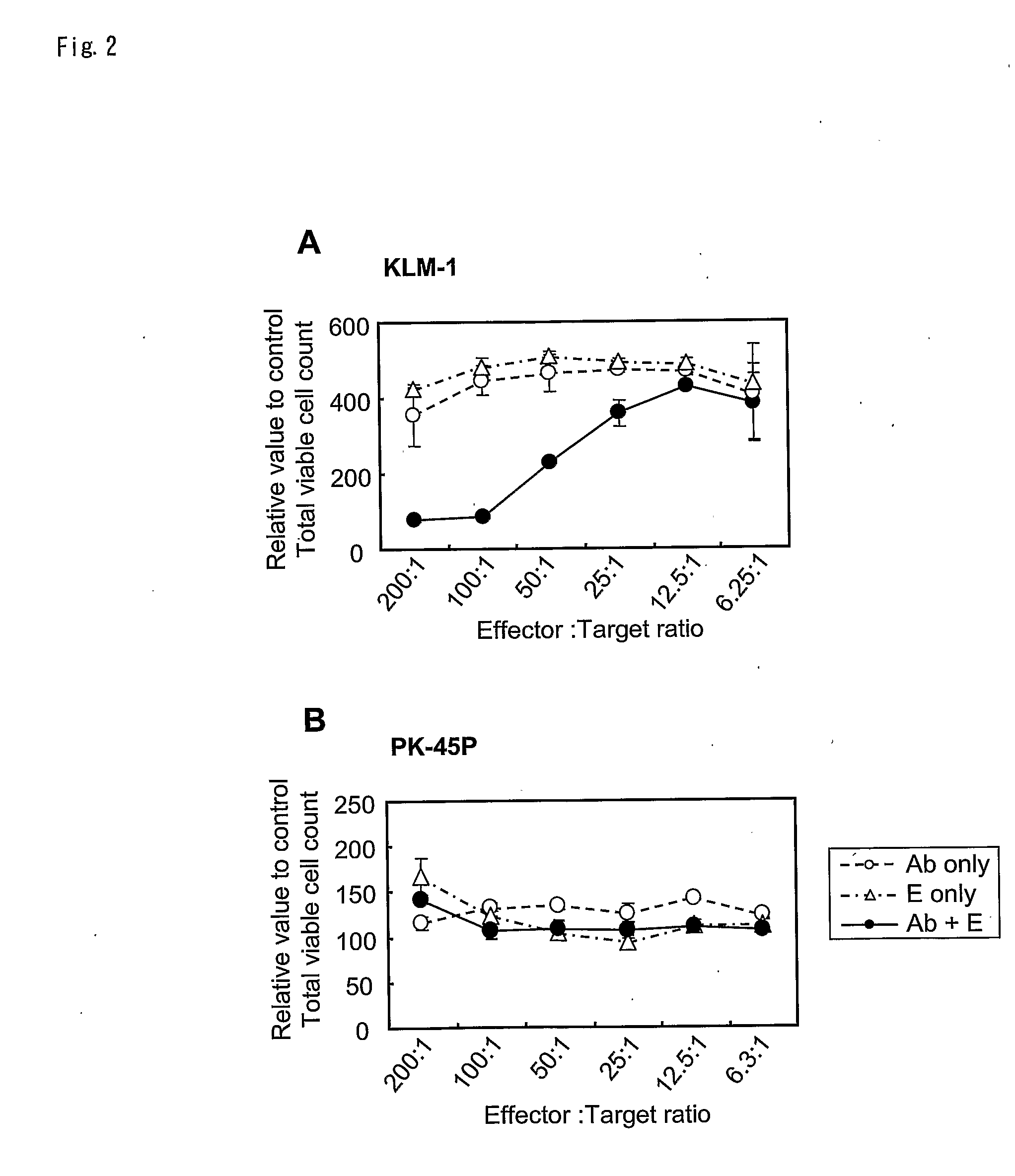Methods for damaging cells using effector functions of Anti-cdh3 antibodies
an anticdh3 antibody and cell-damaging technology, applied in the field of cell-damaging effector functions of anti-cdh3 antibodies, can solve the problems of inability to respond to any treatment in patients at an advanced stage, inability to clinically identify tumor markers, and inability to achieve time- and cost-effective approaches, etc., to achieve potent cytotoxicity, induce cytotoxicity, and increase the expression of cells
- Summary
- Abstract
- Description
- Claims
- Application Information
AI Technical Summary
Benefits of technology
Problems solved by technology
Method used
Image
Examples
examples
[0149]Below, the present invention is further explained based on Examples.
Cell line:
[0150]Human pancreatic, lung, colon, prostate, breast, gastric or liver cancer cell lines were propagated as a monolayer in an appropriate medium with 10% or 20% fetal bovine serum. The cell lines used in the experiment are shown in Table 1.
cell lineMediumPlace obtainedPancreatic cancer Cell lineCAPAN1RPMI + 10% FBSATCC; HTB-79CAPAN2McCoy + 10% FBSATCC; HTB-80KLM-1RPMI + 10% FBSTKG; TKG 0490MiaPaCa2E-MEM + 10% FBSHSRRB; JCRB0070PK-1RPMI + 10% FBSTKG; TKG 0239PK-45PRPMI + 10% FBSTKG; TKG 0493PK-59RPMI + 10% FBSTKG; TKG 0492PK-9RPMI + 10% FBSTKG; TKG 0240SUIT2D-MEM + 10% FBSHSRRB; JCRB1094Lung cancer Cell lineA549RPMI + 10% FBSATCC; CCL-185LC174RPMI + 10% FBSAichi cancer centerLC176RPMI + 10% FBSAichi cancer centerLC319RPMI + 10% FBSAichi cancer centerNCI-H1435RPMI + 10% FBSATCC; CRL-5875NCI-H1793D-MEM + 10% FBSATCC; CRL-5896NCI-H23RPMI + 10% FBSATCC; CRL-5800NCI-H358RPMI + 10% FBSATCC; CRL-5807NCI-H52...
PUM
| Property | Measurement | Unit |
|---|---|---|
| weight | aaaaa | aaaaa |
| time | aaaaa | aaaaa |
| drug resistance | aaaaa | aaaaa |
Abstract
Description
Claims
Application Information
 Login to View More
Login to View More - R&D
- Intellectual Property
- Life Sciences
- Materials
- Tech Scout
- Unparalleled Data Quality
- Higher Quality Content
- 60% Fewer Hallucinations
Browse by: Latest US Patents, China's latest patents, Technical Efficacy Thesaurus, Application Domain, Technology Topic, Popular Technical Reports.
© 2025 PatSnap. All rights reserved.Legal|Privacy policy|Modern Slavery Act Transparency Statement|Sitemap|About US| Contact US: help@patsnap.com



